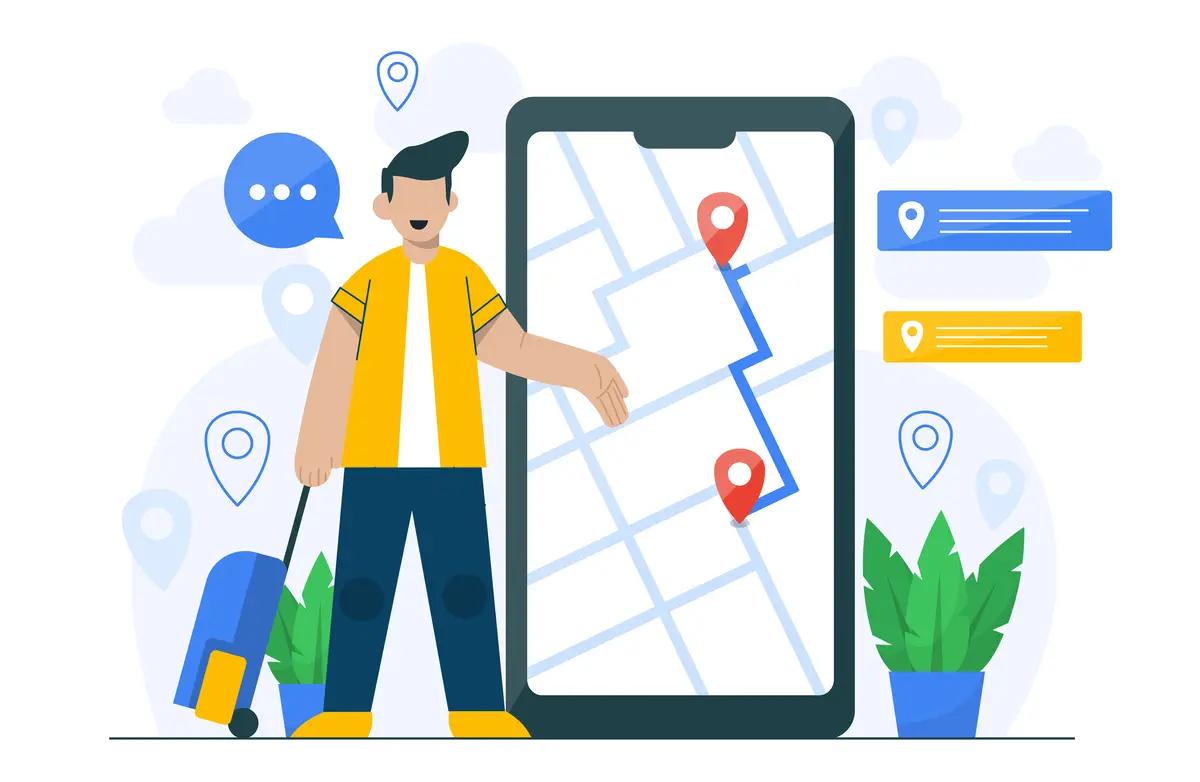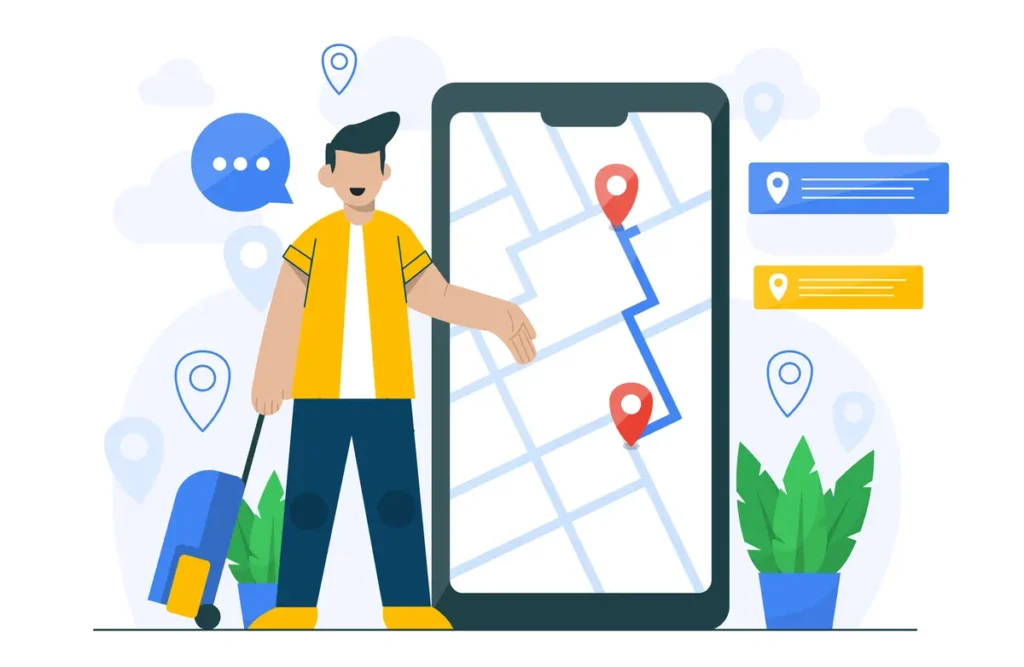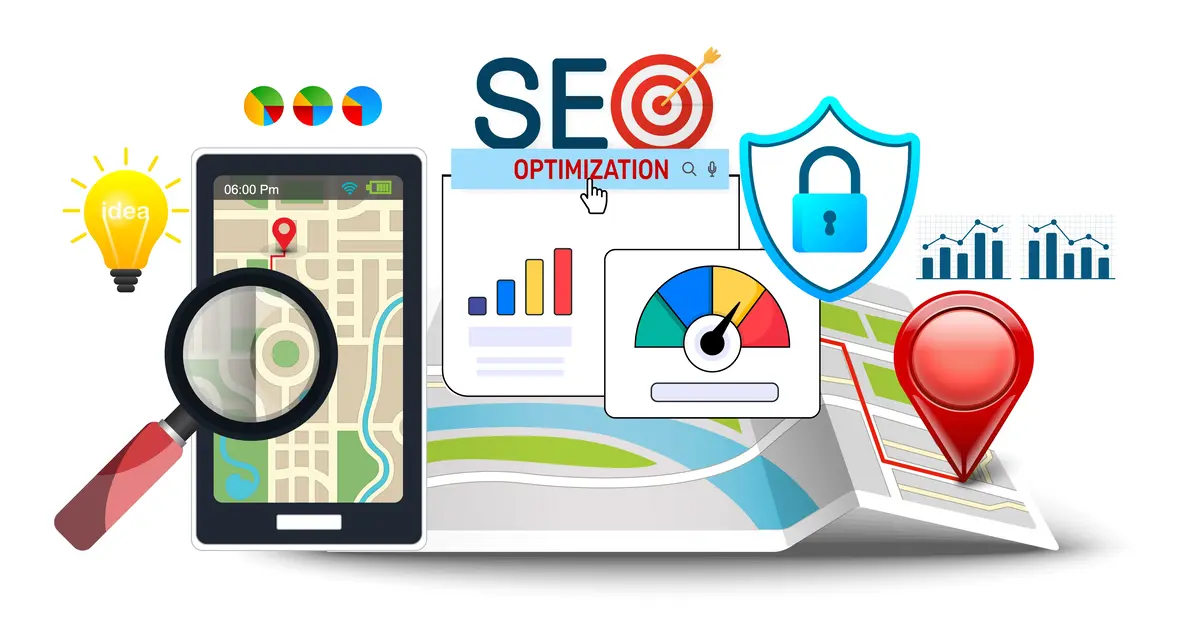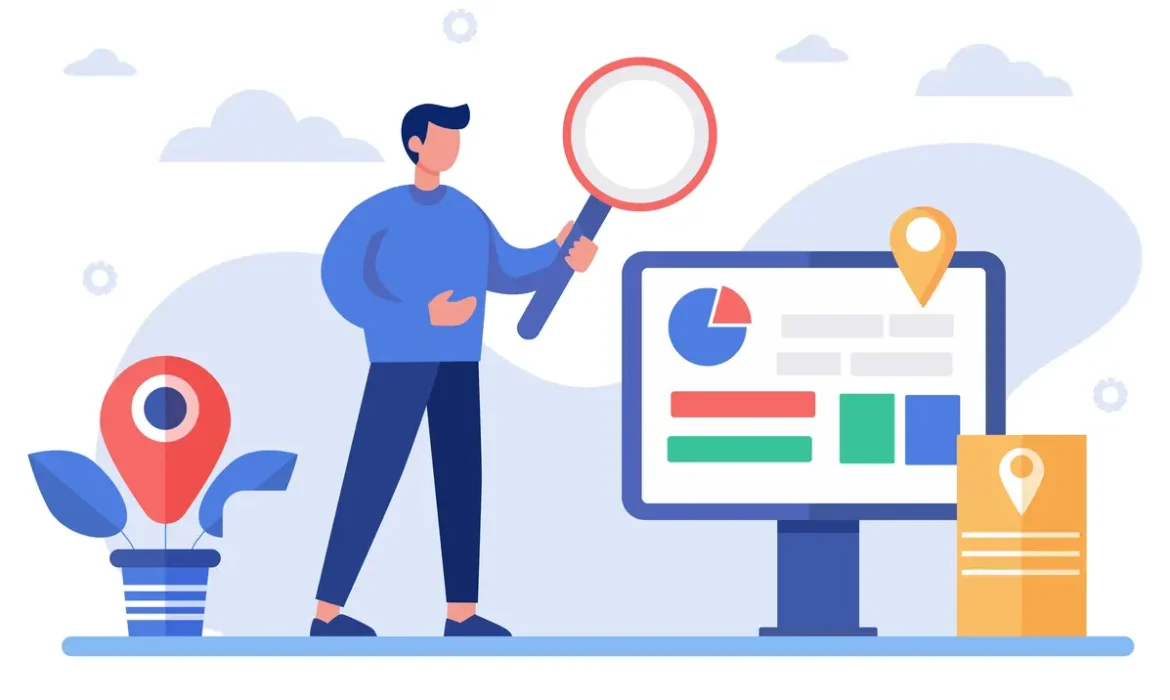Meta Description Guide
Meta Description Guide: Crafting Descriptions That Rank and Drive Clicks
A meta description is a short HTML element summarizing a webpage’s content, appearing beneath the title tag in search engine results pages (SERPs). While not a direct ranking factor, it significantly influences click-through rates (CTR) and user engagement. Crafting compelling and optimized meta descriptions ensures that your webpage attracts both search engines and users. This comprehensive guide will delve into best practices, common pitfalls, and advanced strategies for creating meta descriptions that rank and convert.

What Is a Meta Description and Why Is It Important?
A meta description is a snippet of text that summarizes the content of a webpage. Appearing directly beneath the title tag in search results, it offers users a preview of what they can expect from the page. While Google doesn’t use meta descriptions as a direct ranking factor, their impact on CTR makes them essential for effective SEO. When users are drawn to click on your link because of a well-written meta description, it signals relevance to search engines, indirectly improving rankings.
For example, a meta description for a page about digital marketing services might read, “Discover expert digital marketing strategies to boost your online presence and drive measurable results. Learn more today!” This concise yet informative description provides users with a clear idea of what the page offers and encourages them to click.
Meta descriptions are particularly important in competitive industries, where a compelling snippet can mean the difference between capturing or losing potential traffic. A strong meta description not only improves visibility but also ensures that users find value in your content, leading to better engagement and conversions.

How to Write an Effective Meta Description
Crafting an effective meta description requires a blend of creativity and technical precision. A good meta description is concise, keyword-rich, and tailored to the user’s intent. It should provide enough information to entice users without being overly lengthy or vague.
Start by keeping your meta description under 160 characters. This ensures that it is fully displayed in SERPs, particularly on desktop devices. Incorporating your primary keyword naturally within the description not only helps with SEO but also aligns with the user’s search intent. Avoid keyword stuffing, as this can make the description appear spammy and deter users.
Action-oriented language works well in meta descriptions. Phrases like “Learn more,” “Discover how,” or “Find out why” encourage users to take action. Additionally, including a unique selling proposition (USP), such as “Free shipping” or “24/7 customer support,” can make your link more appealing. For instance, a meta description for a page about online courses might read, “Learn from industry experts with our flexible, affordable online courses. Enroll today and start your journey!”
Finally, tailor each meta description to the specific content of the page. Generic descriptions harm SEO and user experience. By providing a summary that aligns closely with the page’s content, you build trust and set accurate expectations for users.
The Role of Meta Descriptions in SEO
Meta descriptions play an indirect but vital role in SEO. While Google’s algorithms don’t use meta descriptions as a ranking signal, their impact on CTR can influence overall rankings. Pages with higher CTRs signal to Google that they are more relevant to user queries, which can improve their position in search results over time.
Optimizing meta descriptions with primary keywords increases their relevance to search queries. However, keywords should be used naturally and contextually. Overloading the description with keywords not only reduces readability but can also discourage users from clicking.
Another key factor is user engagement. A compelling meta description attracts clicks, but if the content on the page doesn’t match the description, users are likely to bounce. High bounce rates signal to Google that your page may not be providing value, negatively impacting rankings. To avoid this, ensure your meta descriptions accurately represent the page content.
For e-commerce websites, including calls-to-action (CTAs) like “Shop now” or “Limited time offer” can boost CTR. Blogs and informational pages benefit from engaging phrases such as “Learn the secrets to…” or “Find out how…” Tailoring your approach to the type of content ensures that your meta descriptions resonate with your target audience.

Common Mistakes to Avoid
Even experienced marketers can make mistakes when crafting meta descriptions. One of the most common pitfalls is creating duplicate meta descriptions. Each page on your website should have a unique meta description that reflects its specific content. Duplicate descriptions confuse search engines and dilute your SEO efforts.
Another mistake is exceeding the character limit. Meta descriptions longer than 160 characters risk being truncated in SERPs, resulting in incomplete or unclear messaging. This can confuse users and reduce CTR. Similarly, overly generic meta descriptions, such as “Welcome to our website” or “Click here to learn more,” fail to provide value or context, leading users to skip over your link.
Neglecting to include keywords is another frequent error. While meta descriptions are not a direct ranking factor, including relevant keywords helps users identify the relevance of your page to their search query. However, avoid stuffing keywords unnaturally, as this makes the description less appealing to users.
Lastly, failing to align the meta description with the page content can result in high bounce rates. When users click on a link expecting one type of content but find something entirely different, they are likely to leave quickly. This mismatch not only frustrates users but also harms your SEO performance.
Optimizing Meta Descriptions for Mobile and Voice Search
As mobile and voice search continue to grow, optimizing meta descriptions for these platforms has become increasingly important. Mobile users often have limited screen space, so concise and impactful meta descriptions are crucial. Keep your descriptions under 120 characters to ensure they display fully on mobile devices.
For voice search, focus on conversational language that reflects how users might phrase their queries. For example, a meta description for a recipe page might read, “Find easy, step-by-step instructions for making the perfect chocolate cake. Ready in under an hour!” This type of description aligns with natural speech patterns and provides immediate value.
Using structured data can also enhance your meta descriptions. Schema markup allows search engines to display rich snippets, such as star ratings or product availability, alongside your meta description. For guidance on implementing structured data, refer to the Schema Markup Guide .

Testing and Improving Meta Descriptions
Optimizing meta descriptions is an ongoing process. Regularly testing and refining your descriptions ensures they remain effective in driving traffic and engagement. A/B testing is a useful method for comparing different meta description styles and determining which generates higher CTRs.
Analyzing performance metrics through tools like Google Analytics provides insights into how your meta descriptions are performing. Look at metrics such as impressions, clicks, and bounce rates to identify areas for improvement. For example, if a page has high impressions but low CTR, consider rewriting the meta description to make it more engaging.
Keep an eye on industry trends and update your meta descriptions accordingly. Seasonal events, new keywords, or changes in user behavior may require adjustments to keep your descriptions relevant. By staying proactive, you can maintain high performance and adapt to evolving search engine algorithms.
Contact Us
Drop Us a Line
Talk to Our SEO Experts – Start Your Success Journey!
Title Tag Guide
Title Tag Guide: Mastering the Art of Effective SEO Titles
Title tags are a cornerstone of Search Engine Optimization (SEO), serving as the gateway to your webpage for both users and search engines. These HTML elements define the title of a webpage and appear as clickable headlines in search engine results pages (SERPs). Title tags not only influence how search engines interpret your content but also determine whether users find your page compelling enough to click. In this comprehensive guide, we’ll delve into the importance of title tags, best practices for crafting them, common mistakes to avoid, and advanced strategies to optimize your website for higher rankings and better click-through rates (CTR).

What Is a Title Tag?
A title tag is an HTML element that specifies the title of a webpage. It is displayed as the primary link in SERPs and serves as the first impression users have of your page. Beyond its user-facing role, the title tag plays a crucial part in how search engines interpret the relevance and context of your content. For example, a well-constructed title tag for a page about digital marketing services might be “Digital Marketing Services | Boost Your Online Presence Today.”
The importance of title tags cannot be overstated. They act as a critical ranking factor for search engines and a decisive element for user engagement. A strong title tag improves your visibility in search results, while a poorly written one can lead to missed opportunities. By optimizing your title tags with relevant keywords and aligning them with user intent, you can significantly enhance your website’s performance.

Crafting the Perfect Title Tag
Creating a compelling and effective title tag is both an art and a science. The goal is to strike a balance between technical SEO requirements and engaging copywriting. A well-crafted title tag should be concise, descriptive, and rich in keywords without appearing spammy. Ideally, your title tag should be under 60 characters to ensure it is fully visible in SERPs. Placing your primary keyword at the beginning of the title enhances its relevance and visibility for search engines. Secondary keywords can be incorporated naturally to capture broader search intent.
For instance, a title tag like “Affordable SEO Services | Boost Your Website Rankings” communicates the page’s purpose clearly and appeals to both search engines and users. Avoid common pitfalls such as keyword stuffing or using vague titles like “Homepage” or “Untitled Page.” These mistakes confuse search engines and fail to engage users, resulting in poor performance. Additionally, aligning your title tag with the page’s H1 tag ensures consistency and strengthens its relevance.
Adding your brand name at the end of the title tag is a good practice, especially for homepage or branded content. This reinforces your brand identity and builds trust with users. A carefully optimized title tag not only improves rankings but also entices users to click, driving higher CTRs and better engagement.
The Role of Title Tags in SEO Optimization
Title tags are a foundational element of on-page SEO, serving as a signal to search engines about the content and purpose of your page. When optimized effectively, they can elevate your rankings, attract more organic traffic, and improve user experience. The placement of your primary keyword within the title tag is critical. Search engines prioritize pages where the keyword appears early in the title, as it indicates relevance to the query.
Using tools like SEMrush or Moz can help identify high-performing keywords and analyze the effectiveness of your title tags. Including secondary keywords naturally in your title expands your reach by addressing multiple search intents. However, it’s essential to ensure that your title remains readable and user-friendly.
Search engines also assess the uniqueness of title tags. Duplicate title tags across multiple pages confuse search engines and dilute your SEO potential. Each page should have a unique title tag that reflects its specific content and purpose. Furthermore, testing your title tags across different devices ensures they are fully visible and impactful, especially on mobile, where truncation can harm user experience.

Common Mistakes to Avoid When Crafting Title Tags
Despite their importance, title tags are often overlooked or improperly executed. One of the most common mistakes is using duplicate title tags across multiple pages. This practice not only confuses search engines but also reduces your chances of ranking for diverse keywords. Every page should have a unique title tag tailored to its content and purpose.
Another frequent error is keyword stuffing, where too many keywords are crammed into the title tag. While it might seem like a way to improve rankings, keyword stuffing makes titles look spammy and unappealing to users. Instead, focus on using one primary keyword and a secondary keyword naturally within the title. Vague or generic titles like “Home” or “Welcome” are also detrimental, as they fail to convey the page’s value or purpose. Instead, opt for specific and engaging titles that align with user intent.
Ignoring mobile users is another critical mistake. With the majority of searches occurring on mobile devices, ensuring that your title tags are optimized for smaller screens is essential. Test your titles to avoid truncation and ensure they are fully visible. For guidance on structuring your page content to complement your title tags, refer to the Schema Markup Guide for best practices.
Title Tags and CTR (Click-Through Rates)
A well-crafted title tag does more than improve your search rankings—it directly impacts your CTR. High CTRs indicate to search engines that your page is relevant and valuable, further boosting its ranking potential. To create a title tag that drives clicks, focus on engaging and persuasive language. Incorporating numbers, such as “10 Best SEO Strategies for 2024,” adds specificity and attracts attention.
Using power words like “Ultimate,” “Proven,” or “Effective” also makes your title more compelling. Additionally, addressing pain points or offering solutions directly in your title tag resonates with users. For instance, a title like “Fast and Affordable Car Repairs | Book Your Service Now” is likely to attract clicks from users seeking urgent assistance.
Optimizing your title tag for CTR is not a one-time effort. Regularly review and update your titles based on performance metrics. Tools like Google Analytics provide insights into which titles are driving traffic and which need improvement. Continuous optimization ensures your title tags remain relevant and competitive.

Testing and Refining Your Title Tags
Title tag optimization is an ongoing process that requires regular testing and refinement. A/B testing is an effective way to compare different versions of a title tag and determine which performs better. For example, you might test a title emphasizing affordability against one highlighting quality to see which resonates more with your audience.
Analyzing metrics such as impressions, clicks, and average position helps identify opportunities for improvement. Use tools like BrightLocal to monitor local SEO performance and refine your strategy. Iterating on your title tags based on real-world data ensures they continue to drive traffic and engagement.
Regularly updating your title tags also keeps them aligned with evolving search trends and user behavior. For instance, incorporating emerging keywords or addressing seasonal demand can give your titles a competitive edge. By staying proactive in optimizing your title tags, you can maintain and improve your SEO performance over time.
Contact Us
Drop Us a Line
Talk to Our SEO Experts – Start Your Success Journey!
Local Seo Strategies
Local SEO Strategies: The Ultimate Guide to Dominating Local Search
Local SEO has become an essential component of digital marketing for businesses targeting specific geographic areas. As the reliance on search engines grows, particularly for location-based queries, businesses must implement robust local SEO strategies to stay competitive. This guide provides an in-depth look at the most effective strategies to optimize your online presence, attract local customers, and improve your rankings in search results.

What Is Local SEO?
Local SEO refers to optimizing your digital presence to improve visibility for location-specific searches. It is about ensuring that your business appears prominently when users search for services or products near them. This involves a combination of strategies, such as targeting location-specific keywords, optimizing your Google My Business profile, and creating locally relevant content.
For example, a small coffee shop in New York City might optimize for terms like “best coffee shops in NYC” or “cafes near Central Park.” By incorporating local keywords and maintaining accurate business details across platforms, the shop can improve its chances of ranking in local search results. Effective local SEO strategies focus not just on attracting website traffic but also on converting that traffic into footfall and revenue.

The Importance of Local SEO
Local SEO matters because it directly connects businesses to their target audiences in specific regions. Most local searches occur on mobile devices, often with high purchase intent. When someone searches for “grocery store near me,” they are likely looking to visit a store soon. Optimizing your local SEO helps ensure that your business appears at the top of these high-intent searches.
Moreover, local SEO builds trust and credibility. Having accurate and consistent information across directories and appearing in verified search results signal professionalism and reliability to potential customers. Businesses can also compete more effectively with larger brands by narrowing their focus to a specific area. With the rise of mobile and voice searches, the importance of local SEO continues to grow. By optimizing for local queries and tailoring your strategy to user behavior, your business can secure a stronghold in your region.
Optimizing Google My Business (GMB)
One of the most important tools for local SEO is Google My Business. Optimizing your GMB profile ensures your business appears in Google Maps and the coveted local 3-pack, which often dominates the top of local search results. To make the most of GMB, start by ensuring that all your business information, including your name, address, phone number, and website, is accurate and up to date. Add high-quality photos of your storefront, products, and services, and include relevant keywords in your business description to improve search visibility.
Engaging with customers through GMB is another powerful strategy. Regularly post updates, promotions, or events to keep your profile active and engaging. Responding to reviews, both positive and negative, shows potential customers that you value their feedback. For instance, a restaurant in Los Angeles could share weekly specials and encourage satisfied diners to leave reviews. This engagement helps establish trust and improves your rankings. For more detailed guidance on optimizing your profile, refer to the Google My Business Optimization Guide .

Using Location-Specific Keywords
Targeting the right keywords is critical to a successful local SEO strategy. Local keywords align your content with the terms people in your area are searching for. To identify these keywords, tools like SEMrush or Google Keyword Planner are invaluable. They can help you find high-volume search terms like “affordable dentist in Chicago” or “car repair near me.”
Once you’ve identified these keywords, integrate them into your website’s key elements, such as titles, meta descriptions, headers, and body text. Using natural phrases that reflect how people speak during voice searches is particularly effective. For instance, instead of optimizing for “pizza delivery,” a more conversational approach like “where can I get pizza delivered nearby?” may capture a broader audience. By focusing on location-specific keywords, businesses can improve their relevance and visibility in search results.
Building and Managing Local Citations
Local citations are online mentions of your business’s name, address, and phone number (NAP). These citations typically appear on directories, social platforms, or other websites and play a significant role in establishing your business’s legitimacy. Platforms like Yelp, Bing Places, and Moz Local are some of the most valuable for building citations.
To make the most of your citations, ensure your NAP details are consistent across all platforms. Inconsistent information can confuse both customers and search engines, potentially lowering your rankings. Regularly auditing your citations and updating outdated information helps maintain your credibility. A plumbing service in Miami, for instance, should ensure that their contact details and service hours are consistent on all platforms to avoid missing customer inquiries.

The Power of Online Reviews
Online reviews not only influence consumer decisions but also play a significant role in local SEO rankings. Positive reviews signal to search engines that your business is trustworthy and provides high-quality services. Platforms like Trustpilot and Google Reviews are essential for gathering and managing customer feedback.
Encouraging reviews can be as simple as asking satisfied customers for feedback via email or text. Responding to reviews, whether they are glowing endorsements or constructive criticism, demonstrates your commitment to customer satisfaction. A boutique hotel, for instance, could ask guests to share their experiences on Google Reviews, further building its reputation. Engaging with reviews improves visibility and fosters customer loyalty.
Optimizing for Mobile and Voice Search
Most local searches are conducted on mobile devices, often using voice search. This makes mobile and voice optimization critical for any local SEO strategy. To optimize for mobile, ensure your website is responsive, loads quickly, and includes features like click-to-call buttons. For voice search, focus on conversational, long-tail keywords. Phrases like “What’s the best Italian restaurant near me?” align better with voice queries than traditional keywords.
Adding structured data to your website also helps search engines understand your content, improving your chances of appearing in voice-driven results. For detailed implementation, refer to the Schema Markup Guide .

Creating Locally Relevant Content
Content tailored to your local audience is a powerful tool for driving engagement and improving rankings. Blog posts about local events, guides to your city, or customer success stories all resonate with local users. For instance, a real estate agency could create articles like “Top 5 Neighborhoods to Live in Houston” to attract potential buyers searching for area-specific information.
Monitoring and Analyzing Performance
To ensure your local SEO strategies are effective, it’s crucial to monitor performance using tools like Google Analytics and BrightLocal . These tools provide insights into your rankings, traffic, and customer engagement, helping you refine your approach for maximum impact.
mastering Local SEO strategies is essential for businesses aiming to connect with their local audience and drive meaningful engagement. By optimizing your Google My Business profile, targeting location-specific keywords, managing online reviews, and creating locally relevant content, you can significantly improve your visibility in local search results. Tools like Moz Local and Google Analytics help track progress and refine your approach. As search behavior continues to evolve, businesses that invest in local SEO will stand out, attract high-intent customers, and build long-term success in their communities. Start optimizing today to dominate local search!
Contact Us
Drop Us a Line
Talk to Our SEO Experts – Start Your Success Journey!
Location Seo
Location SEO: The Ultimate Guide to Boost Your Local Visibility
Location SEO is a powerful strategy for businesses aiming to attract local customers through online searches. It focuses on optimizing your website and online presence to rank higher in local search results, such as Google Maps or queries like “near me” searches.
This guide explores the significance of Location SEO, essential strategies, and actionable tips while integrating all internal and external links effectively.

What Is Location SEO?
Location SEO optimizes your digital presence to attract customers searching for services in specific geographic locations. By leveraging local keywords, updating Google My Business profiles , and managing customer reviews, businesses can build visibility and credibility.
For instance, adding schema markup to your site ensures search engines understand your content. Implementing the Schema Markup Guide improves your chances of ranking in local searches and appearing in Google’s rich results.

Why Is Location SEO Important?
Builds Local Credibility: Local SEO helps businesses appear more reliable and trustworthy by showcasing verified reviews on platforms like Trustpilot . Positive reviews not only attract customers but also improve search rankings.
Attracts Ready-to-Act Customers: Users searching for local services are often ready to make a purchase. Capturing these high-intent customers can drive conversions and increase revenue.
Improves Local Rankings: By using tools like Google Analytics , businesses can monitor where local traffic originates and which pages are performing well, optimizing their efforts accordingly.
Key Strategies for Location SEO
Encourage Customer Reviews: Reviews play a critical role in building trust and improving local rankings. Platforms like Trustpilot allow customers to share feedback, which improves your online reputation and ranking.
Track Local Traffic: Using Google Analytics , you can analyze traffic from local users, identify popular services, and refine your strategy to meet their needs.
Add Schema Markup: Structured data enhances search engine understanding of your content, improving visibility in local searches. Learn how to implement schema with the Schema Markup Guide .
Create Localized Landing Pages: Create unique pages for each location you serve, optimizing them for specific keywords such as “best coffee shop in Brooklyn” or “emergency plumber in San Diego.”
Optimize for Voice Search: Voice queries often include conversational phrases like “best pizza place near me.” Incorporate voice search SEO strategies to ensure your business ranks for these queries.

Tools for Location SEO
- Trustpilot: Collect and display reviews to boost your credibility and rankings.
- Google Analytics: Monitor traffic, engagement, and conversion data from local visitors.
- SEMrush : Track local keyword performance and competitors.
- Moz Local : Manage local business listings across directories.
- BrightLocal : Analyze your local SEO performance comprehensively.
Common Challenges in Location SEO
Negative Reviews: Even a few negative reviews can impact your online reputation. Monitor platforms like Trustpilot to address complaints professionally and maintain trust.
Measuring ROI: Tracking the effectiveness of location SEO campaigns can be difficult without the right tools. Use Google Analytics to measure metrics like traffic and conversions from local searches.
Best Practices for Location SEO
Optimize Google My Business: Keep your GMB profile updated with accurate information and engaging content like photos and posts. A complete profile enhances your local rankings.
Use Local Keywords: Incorporate keywords such as “near me” and specific city or neighborhood names into your content and meta descriptions. Use SEMrush to find high-performing local terms.
Partner with Local Influencers: Collaborate with local bloggers or influencers to boost visibility in your area. For instance, a restaurant could work with a food critic based in the same city.
Monitor Analytics Regularly: Analyze local traffic data using Google Analytics to refine your strategies and identify opportunities for improvement.

Future Trends in Location SEO
As search technology evolves, Location SEO will continue to focus on hyper-local targeting and personalized user experiences. Features like AI-driven suggestions and AR-enhanced navigation will redefine local search interactions. Businesses investing in platforms like Trustpilot and tools like Google Analytics will be well-equipped to thrive in this ever-changing landscape.
Contact Us
Drop Us a Line
Talk to Our SEO Experts – Start Your Success Journey!
Mobile Marketing
Mobile Marketing: A Comprehensive Guide to Drive Conversions in a Mobile-First World
Mobile marketing has become an essential strategy in today’s digital landscape, with mobile devices accounting for the majority of internet traffic. Mobile marketing involves engaging users through mobile-optimized websites, apps, SMS, push notifications, and social media. The key to success lies in delivering personalized, seamless experiences tailored to your audience’s preferences and behavior.
This guide explores the importance of mobile marketing, effective strategies, challenges, and actionable tips to optimize your campaigns. With a focus on practical insights and tools, this resource will help you achieve higher engagement, conversions, and ROI.

What Is Mobile Marketing?
Mobile marketing is the practice of promoting products and services to users through mobile devices. It encompasses various channels such as SMS, mobile apps, in-app ads, push notifications, and mobile-friendly websites. The primary goal is to engage users on their preferred devices, driving traffic and conversions.
For example, a local restaurant could use SMS to send time-sensitive offers to nearby customers. Combining this with strategies like local keyword optimization ensures the message reaches the right audience. By leveraging Google Analytics , businesses can monitor mobile traffic and user behavior to refine their strategies.
As mobile usage continues to grow, businesses that embrace mobile marketing will stay ahead of their competitors by reaching users directly on their devices.

Why Is Mobile Marketing Important?
Dominance of Mobile Devices: Over 60% of global internet traffic comes from mobile devices, highlighting the importance of mobile-first strategies. Users spend significant time on mobile apps, making this a critical channel for engagement.
Personalized Engagement: Mobile marketing allows for hyper-personalized experiences. For example, geotargeted push notifications can alert users about nearby promotions or events, improving relevance and engagement.
High Engagement Rates: Mobile-specific channels like SMS and push notifications boast open rates as high as 98%. In comparison, email averages a 20% open rate. This makes mobile marketing one of the most effective tools for direct communication.
Integration with Other Channels: Mobile marketing integrates seamlessly with other digital efforts, such as social media, PPC, and email marketing. For instance, an ad campaign optimized for mobile search can drive traffic to a Google My Business listing , improving local visibility.
By prioritizing mobile marketing, businesses can capitalize on growing mobile usage, deliver relevant messages, and achieve measurable results.
Key Strategies for Mobile Marketing
Optimize for Mobile Search: Mobile users often search with intent-driven queries like “restaurants near me” or “best deals on phones.” Optimize your site for these queries by using tools like SEMrush to identify mobile-friendly keywords. Ensure your site is mobile-responsive, loads quickly, and features concise content.
Leverage SMS and MMS Marketing: SMS and MMS are direct, cost-effective channels for reaching users. For instance, a fashion retailer can send SMS alerts about flash sales, driving immediate purchases. Pair these messages with rich media, such as product images or videos, to enhance engagement.
Create Mobile Apps: Apps provide a dedicated platform for engaging users. Features like in-app messaging, personalized content, and loyalty programs keep users returning. Analyze app performance with tools like Localytics to refine user experiences.
Use Location-Based Marketing: Geotargeting enables businesses to reach users based on their location. For example, a coffee shop could send push notifications about discounts to users within a 1-mile radius. Enhance local SEO efforts with structured data from the Schema Markup Guide to improve visibility in local searches.
Optimize Content for Mobile: Mobile-friendly content is concise, visually engaging, and easy to navigate. Use responsive design to ensure your site adapts to various screen sizes, and compress images to improve loading speed.

Top Tools for Mobile Marketing
Google Analytics: Analyze mobile traffic, behavior, and conversions to optimize campaigns.
SEMrush: Identify mobile-specific keywords and track competitors’ strategies.
PushEngage : Create and manage push notification campaigns for better user engagement.
Localytics: Gain insights into app performance and user behavior for improved retention.
BrightLocal : Enhance local SEO performance to attract mobile users searching for nearby services.
These tools streamline the execution and monitoring of mobile marketing campaigns, ensuring better ROI.
Challenges in Mobile Marketing
Fragmented User Experience: With varying screen sizes and operating systems, delivering a consistent experience across devices can be challenging. Businesses must invest in responsive design and rigorous testing.
Privacy and Compliance: Mobile marketing often involves collecting personal data, raising privacy concerns. Ensure compliance with regulations like GDPR and CCPA, and always obtain user consent.
High Competition: Standing out in the crowded mobile space requires high-quality, innovative content that captures attention immediately.
Attribution and Tracking: Tracking the impact of mobile campaigns and attributing conversions to specific channels can be complex. Tools like Google Tag Manager simplify this process.

Best Practices for Mobile Marketing
Adopt a Mobile-First Approach: Design campaigns with mobile users in mind. Ensure your website is mobile-responsive, with fast loading speeds and intuitive navigation.
Personalize Content: Leverage user data to deliver personalized messages. For example, recommend products based on past purchases or browsing history.
Focus on Voice Search Optimization: With the rise of virtual assistants, optimizing for voice search helps businesses capture voice-driven mobile queries.
Regularly Test Campaigns: A/B testing for SMS timing, push notification content, or app layouts ensures continuous improvement and better results.
Monitor Analytics: Track key metrics like mobile traffic, bounce rates, and conversions to refine your campaigns and maximize ROI.
The Future of Mobile Marketing
The future of mobile marketing lies in AI-driven personalization, augmented reality (AR) experiences, and 5G technology. AI enables businesses to predict user behavior and deliver tailored recommendations, while AR enhances user interaction with immersive experiences. As 5G adoption increases, faster connectivity will unlock new possibilities for engaging users on mobile platforms.
Contact Us
Drop Us a Line
Talk to Our SEO Experts – Start Your Success Journey!
Voice Search Seo
Voice Search SEO: A Comprehensive Guide to Optimize for Conversational Queries
Voice search has revolutionized how people interact with technology and search engines. With the rise of virtual assistants like Siri, Alexa, and Google Assistant, users now prefer conversational, hands-free searches to find information. Voice Search SEO is the strategy of optimizing your website to capture these queries effectively. This detailed guide covers its importance, tools, strategies, and actionable steps to dominate voice search rankings.

What Is Voice Search SEO?
Voice Search SEO involves tailoring your website’s content and structure to match how users ask questions aloud. Unlike typed searches, voice queries are longer, conversational, and often framed as complete questions. For example, instead of typing “best Italian restaurants NYC,” a user might ask, “What are the best Italian restaurants near me?”
This shift requires businesses to optimize for long-tail keywords and local queries that reflect natural speech patterns. Implementing strategies like creating content that directly answers questions and leveraging tools like Google My Business helps businesses capture this growing segment of search traffic.
By understanding the nuances of voice search and optimizing accordingly, businesses can position themselves as the top answer in search results, which is increasingly important as voice assistants often provide only one response.

Why Is Voice Search SEO Important?
The Rapid Growth of Voice Search: Voice search adoption is growing rapidly, driven by the popularity of smart speakers like Amazon Echo and Google Home. By 2025, an estimated 75% of households are expected to own at least one smart speaker, emphasizing the need for businesses to adapt their SEO strategies.
Capturing Conversational Queries: Voice queries often mimic natural conversation. For example, users might ask, “How do I bake a chocolate cake?” instead of typing “chocolate cake recipe.” This change means businesses must focus on long-tail keywords and conversational content to stay relevant.
Local Search Domination: A significant proportion of voice searches have local intent, such as “Where is the nearest gas station?” Optimizing for local SEO ensures businesses appear in these high-intent queries, driving foot traffic and conversions.
Featured Snippets Advantage: Voice assistants often read featured snippets as their response. Optimizing your content for snippets increases your chances of being the top answer.
By adapting to these trends, businesses can future-proof their SEO strategies, staying competitive in a voice-driven digital landscape.
Key Strategies for Voice Search SEO
Focus on Long-Tail Keywords: Voice searches are longer and more specific than text-based queries. Using tools like SEMrush , identify long-tail keywords that reflect how people naturally ask questions. For example:
- Text search: “weather tomorrow”
- Voice search: “What’s the weather going to be like tomorrow?”
By integrating these keywords into your content naturally, you increase your chances of appearing in voice search results.
Prioritize Local SEO: Voice searches often include location-based phrases like “near me” or “close by.” Optimize your Google My Business profile with accurate NAP (Name, Address, Phone number) details and customer reviews. Tools like Moz Local help ensure consistent local listings.
Create FAQ Content: FAQs are tailored for voice queries as they directly answer questions users might ask. For example, a beauty salon could include, “How often should I get a facial?” as part of its FAQ section. Enhance this content with structured data to improve its visibility in search results.
Enhance Mobile Usability: Most voice searches occur on mobile devices, making mobile optimization crucial. Ensure your website loads quickly, adapts to smaller screens, and offers easy navigation to improve the user experience.
Use Schema Markup: Structured data helps search engines understand your content better, increasing your chances of appearing in featured snippets. Use schema for FAQs, products, and local business details to enhance your visibility in voice search results.

Tools for Voice Search Optimization
Google Search Console: Monitor your website’s search performance, identify voice-driven keywords, and optimize accordingly.
AnswerThePublic : This tool generates questions users commonly ask about a topic, allowing you to create content that aligns with voice search queries.
BrightLocal : Track and improve your local SEO performance to capture local voice search traffic.
SEMrush: Analyze long-tail keywords, track competitors’ performance, and refine your voice search strategy.
Moz Local: Ensure your business listings are accurate and optimized for local searches, a critical factor in voice SEO.
By leveraging these tools, businesses can streamline their voice search optimization efforts and stay ahead of competitors.
Common Challenges in Voice Search SEO
Complex Search Intent: Voice queries often have layered intent. For example, “What’s the best coffee shop near me?” could imply a need for reviews, directions, or hours of operation. Understanding these nuances is critical.
Limited Search Results: Unlike traditional searches, voice assistants usually provide only one result. This makes it vital to aim for the top spot through featured snippets and high-quality content.
Technical SEO Requirements: Voice search demands fast page loading times, mobile optimization, and robust structured data. Failing in these areas can limit your visibility.
Rapid Algorithm Changes: Search engines frequently update their algorithms to refine voice search results. Staying informed and adapting your strategy is essential for sustained success.

Best Practices for Voice Search SEO
Use Conversational Language: Write content that mimics natural speech patterns. Instead of formal text, use a conversational tone that aligns with how people ask questions.
Optimize for Featured Snippets: Craft concise, accurate answers to common questions. For example, use bullet points or numbered lists to increase the likelihood of being featured.
Monitor Analytics: Use Google Analytics to track the impact of voice search on your traffic and identify opportunities for improvement.
Encourage Positive Reviews: Customer reviews influence voice search rankings for local businesses. Platforms like Trustpilot help manage and analyze reviews.
Refresh Content Regularly: Update your content to include trending keywords and align with changing user behaviors.
The Future of Voice Search SEO
Voice search will continue to evolve with advancements in AI and natural language processing. Future trends include:
- Multilingual Voice Search: Catering to non-English queries.
- Smart Device Integration: Optimizing for IoT devices.
- Visual Search Hybridization: Combining voice and visual search capabilities.
Investing in Voice Search SEO today ensures businesses remain relevant as search habits shift towards conversational queries.
Contact Us
Drop Us a Line
Talk to Our SEO Experts – Start Your Success Journey!
Social Media Local
Social Media Local: A Comprehensive Guide to Mastering Local Engagement
Social media is no longer just a global platform; it’s an essential tool for local businesses to connect with their nearby audience. Social media local strategies focus on using social platforms like Facebook, Instagram, and Twitter to target customers in specific geographic areas, foster engagement, and drive sales.
This guide explores the importance of social media local, the best practices for leveraging it, and actionable strategies to achieve success in your local market.

What Is Social Media Local?
Social media local refers to the practice of using social media platforms to target, engage, and convert audiences within a specific geographic area. Unlike global campaigns, local strategies are hyper-focused on community engagement, building relationships, and driving foot traffic to physical locations.
For example, a coffee shop in Chicago might use geo-targeted ads on Facebook or promote user-generated content with hashtags like #BestCoffeeChicago. By tailoring content and promotions to their local audience, businesses can achieve higher engagement and conversion rates.
Platforms like Facebook’s Local Ads and Instagram’s Geo-Tagging enable businesses to pinpoint their audience with precision. When paired with local keyword strategies , these efforts amplify visibility and drive meaningful results.

Why Is Social Media Important for Local Businesses?
Enhances Local Visibility: Social media platforms allow businesses to reach potential customers in their area through geo-targeted ads, location hashtags, and local event promotions.
Improves Customer Engagement: Interacting with your audience through comments, direct messages, and stories fosters trust and loyalty. Tools like Hootsuite help streamline engagement efforts.
Drives Traffic to Your Location: By promoting special offers or events, social media can drive foot traffic to your store or office. Features like Instagram’s “Shop Local” sticker further encourage in-person visits.
Supports Local SEO Efforts: Social signals, such as shares and comments, contribute to your overall online presence. Linking your social profiles to your Google My Business profile improves local SEO performance.
Builds Community Relationships: Social media provides a platform for businesses to participate in local conversations, showcase community involvement, and build a strong local presence.
Strategies for Local Social Media Success
Use Geo-Targeted Ads: Platforms like Facebook and Instagram offer robust geo-targeting options that allow you to deliver ads to users in specific locations. For instance, a fitness center in New York can target ads to residents within a 10-mile radius. Tools like AdEspresso simplify ad creation and optimization.
Leverage Location Tags and Hashtags: Including location-specific tags like #NYCPizza or #DowntownLA in your posts ensures your content reaches users searching for local businesses. Instagram’s location tag feature enhances discoverability.
Promote User-Generated Content: Encourage customers to share photos of your products or services and tag your business. Reposting user-generated content builds trust and fosters community engagement.
Collaborate with Local Influencers: Partnering with micro-influencers in your area can amplify your reach. For example, a bakery could collaborate with a local food blogger to promote their new menu items.
Host Local Events or Giveaways: Social media is an excellent platform for promoting local events or giveaways. For instance, a bookstore might host a “local author signing day” and promote it via Facebook events.

Key Platforms for Social Media Local
Social media platforms offer unique features tailored for local engagement, enabling businesses to connect with their nearby audience effectively.
Facebook: Facebook supports local businesses with tools like business pages, events, geo-targeted ads, and recommendations. These features allow businesses to promote products and services to specific locations. For instance, a restaurant can use geo-targeted ads to introduce a new dish to customers within its neighborhood, driving both awareness and foot traffic.
Instagram: Instagram’s geo-tags, hashtags, stories, and shopping tools are ideal for promoting local brands visually. A boutique, for example, can showcase its latest collection through Instagram Reels and tag it with #ShopLocal, making it easier for nearby users to discover and engage with their products.
Twitter: Twitter allows businesses to use local hashtags, share live updates about events, and interact with customers in real time. A real estate agency can leverage hashtags like #MiamiRealEstate to share property updates and engage with potential buyers in the area.
LinkedIn: LinkedIn facilitates professional networking and local business connections. A co-working space can promote events for local entrepreneurs, fostering collaboration and community engagement.
TikTok: TikTok’s trend-based content and local challenges are perfect for engaging audiences creatively. A gym can start a fitness challenge, encouraging local users to participate and share their workouts, boosting both awareness and brand loyalty.
Challenges in Social Media Local
Standing Out in a Crowded Space: Local businesses often compete for attention on the same platforms. Unique, high-quality content is key to differentiation.
Managing Multiple Platforms: Consistently engaging on multiple social platforms can be time-consuming. Tools like Buffer simplify scheduling and management.
Ad Fatigue: Repeated ads can lead to audience disengagement. Regularly refresh your creatives to maintain interest.
Measuring ROI: Tracking the effectiveness of local social media efforts can be challenging. Use analytics tools to measure engagement, traffic, and conversions.

Best Practices for Social Media Local
Optimize Your Profiles: Ensure your profiles are complete with accurate contact information, location details, and website links. This boosts credibility and helps users find you easily.
Engage Regularly: Respond to comments, share user content, and participate in local conversations to foster relationships.
Create Locally Relevant Content: Share content that resonates with your local audience, such as news, events, or community initiatives.
Monitor Analytics: Use insights from tools like Sprout Social to track the performance of your posts and refine your strategy.
Social media local is a powerful strategy for businesses looking to dominate their local market. By leveraging geo-targeted ads, engaging with local influencers, and sharing location-specific content, businesses can enhance their visibility, build community relationships, and drive growth. Start optimizing your social media strategy today with tools like Facebook Ads Manager and Hootsuite, and watch your local presence thrive.
Contact Us
Drop Us a Line
Talk to Our SEO Experts – Start Your Success Journey!
Keyword Research Guide
Keyword Research Guide: The Comprehensive Blueprint for SEO Success
Keyword research is the backbone of every successful SEO campaign. It enables businesses to understand what their audience is searching for, align their content strategy with user intent, and outperform competitors in search rankings. This detailed guide delves into the key components of keyword research, including its importance, effective techniques, tools, and strategies to stay ahead in the digital landscape.

What Is Keyword Research?
Keyword research is the process of identifying and analyzing the search terms that users enter into search engines. It provides valuable insights into the language, queries, and interests of your target audience, allowing businesses to create content that resonates with their needs.
For example, a business specializing in home improvement might find that users frequently search for “DIY home renovation tips” or “best materials for kitchen remodeling.” By targeting these terms, the business can create valuable content that ranks high in search results.
Keyword research isn’t just about finding high-volume keywords. It’s about understanding user intent, identifying long-tail opportunities, and leveraging related terms to build a robust content strategy. Internal tools like the Local Keywords Guide can help businesses incorporate effective local strategies into their research process. Understanding what users are looking for is the first step toward meeting their expectations and driving engagement.

Why Is Keyword Research Important?
Drives Targeted Traffic: Keyword research aligns your content with what your audience is searching for, ensuring high-quality, relevant traffic. Unlike generic strategies, targeted keywords focus on users already interested in your products or services, increasing conversion rates.
Improves Search Rankings : Search engines prioritize content that aligns with user queries. Using tools like Ahrefs , you can identify keywords with low competition but high search volume, improving your chances of ranking on the first page.
Enhances Content Relevance: By understanding the phrases your audience uses, you can create tailored content that answers their questions and meets their needs. This builds trust and authority, essential factors for SEO success.
Supports Competitive Analysis: Keyword research also reveals what your competitors are targeting. Tools like SEMrush allow you to analyze competitor keywords, identify gaps, and capitalize on missed opportunities.
With the right approach, keyword research becomes a powerful driver of organic growth, helping businesses build authority and capture more market share.
Types of Keywords
Short-Tail Keywords: Short-tail keywords, also known as “head terms,” consist of one or two words, such as “SEO tools.” These keywords often have high search volumes but are highly competitive, making them challenging to rank for without a robust strategy.
Long-Tail Keywords: Long-tail keywords are longer and more specific phrases, such as “best SEO tools for small businesses.” These terms often have lower search volumes but higher conversion rates because they target users with a specific intent. For instance, targeting “affordable laptops for students” caters to a well-defined audience with high purchasing intent.
Local Keywords: Local keywords focus on location-based searches, such as “plumbers near me” or “best coffee shops in Chicago.” These keywords are vital for businesses serving specific regions. Tools like the Google My Business Optimization Guide help ensure that businesses rank well for local searches.
Latent Semantic Indexing (LSI) Keywords: LSI keywords are contextually related terms that search engines use to understand the content’s topic. For example, for the keyword “digital marketing,” LSI terms might include “online advertising,” “SEO strategies,” or “content marketing tools.”
Targeting a mix of these keyword types ensures a balanced strategy that addresses multiple aspects of search behavior.

How to Conduct Keyword Research Effectively
Understand Your Audience: The first step in keyword research is understanding your target audience. Tools like Google Analytics provide demographic and behavioral data, helping you identify the interests, preferences, and search habits of your users.
Leverage Keyword Research Tools: Use tools like SEMrush, Ahrefs, and Google Keyword Planner to identify keywords with high search volumes, low competition, and strong relevance to your business. These tools also provide insights into related terms, trends, and competitive metrics.
Focus on Search Intent: Each keyword represents a specific search intent:
- Informational Intent: Keywords like “how to optimize a website” indicate users are seeking knowledge.
- Navigational Intent: Keywords like “Google My Business login” indicate users are searching for a specific platform or service.
- Transactional Intent: Keywords like “buy running shoes online” indicate readiness to make a purchase.
Understanding and targeting search intent improves your content’s relevance and ranking potential.
Analyze Competitors: Competitor analysis is a crucial part of keyword research. By studying the keywords your competitors rank for, you can identify content gaps and create unique, high-value content to fill them. Tools like Moz Keyword Explorer are invaluable for this purpose.
Prioritize and Organize Keywords: Group keywords into primary, secondary, and tertiary categories based on their importance and relevance. This approach ensures your content is focused and avoids keyword stuffing, which can lead to penalties.
Challenges in Keyword Research
High Competition for Short-Tail Keywords: Competing for broad keywords can be difficult, especially for smaller businesses. Focusing on niche, long-tail keywords offers a more achievable path to ranking.
Changing Search Trends: Search behavior evolves, and keywords that were popular last year may lose relevance. Regularly updating your keyword list is essential.
Difficulty Matching Intent: Using the wrong keywords can lead to high bounce rates and low engagement. Always align keywords with user intent to maximize results.
Over-Optimization Risks: Keyword stuffing can hurt your SEO. Maintain a natural flow in your content while strategically incorporating keywords.

Best Practices for Keyword Research
Use Multiple Tools: Relying on just one tool limits your insights. Combine data from platforms like Ahrefs, Ubersuggest , and Google Trends for a comprehensive strategy.
Regularly Monitor Performance: Track keyword rankings, click-through rates, and conversions using tools like Google Search Console to measure the effectiveness of your strategy.
Embrace Seasonal Keywords: Identify keywords that are relevant during specific times of the year, such as “Black Friday deals” or “summer vacation packages.”
Optimize for Voice Search: With the rise of smart devices, conversational keywords like “What’s the best pizza place nearby?” have become more prevalent. Incorporate these into your strategy to stay ahead.
Effective keyword research is a continuous process that requires understanding your audience, leveraging the right tools, and adapting to evolving search behaviors. By following the strategies outlined in this guide and using platforms like Google Keyword Planner and Ahrefs, businesses can achieve higher search rankings, drive quality traffic, and improve engagement.
Start refining your keyword research strategy today to unlock your website’s full potential.
Contact Us
Drop Us a Line
Talk to Our SEO Experts – Start Your Success Journey!
Local Analytics
Local Analytics: The Comprehensive Guide for Businesses
Understanding local analytics is essential for businesses that want to connect with their nearby audience and optimize their marketing strategies. Local analytics provides valuable insights into customer behavior, search engine rankings, and campaign performance, enabling businesses to make data-driven decisions. This guide will delve deeply into local analytics, its importance, tools, and actionable strategies for success.

What Is Local Analytics?
Local analytics is the process of collecting, analyzing, and interpreting data specific to a defined geographic area or audience. It focuses on key performance indicators (KPIs) like search visibility, customer behavior, and online engagement for a specific location.
For example, Google My Business Insights reveals how customers find your business, what actions they take, and the keywords that lead them to your profile. This data allows businesses to optimize their local presence by tailoring content, promotions, and services to their local audience.

Why Local Analytics Is Crucial for Your Business
Improves Local Search Performance
Local analytics helps businesses track search engine rankings for specific keywords, such as “plumber near me.” Using this information, businesses can optimize content for relevant local keywords , boosting their visibility in search results.Enhances Customer Understanding
Analyzing customer behavior data, such as the most visited pages or time spent on the site, allows businesses to adjust their offerings to meet customer needs. Integrating tools like Google Analytics provides detailed insights into audience demographics and interests.Tracks Campaign Effectiveness
Measure the ROI of local marketing campaigns by monitoring traffic, leads, and conversions. Platforms like BrightLocal offer detailed reporting on local campaigns.Supports Decision-Making
Data from local analytics informs strategic decisions, such as where to open a new location or which product to promote in a specific area.
Key Metrics to Monitor in Local Analytics
Search Rankings and Impressions: Track how your business ranks for local queries, such as “best Mexican restaurant in [City].” Use tools like SEMrush to identify opportunities to improve rankings and capture more clicks.
Customer Journey and Behavior: Understand the actions your customers take before converting. For instance:
Bounce Rates: A high bounce rate may indicate irrelevant content or poor website design.
Session Duration: Longer sessions suggest engaging and valuable content. Analyze these metrics to refine user experiences.
Reviews and Sentiments: Customer reviews are critical for local SEO. Use platforms like Trustpilot to monitor review trends. Positive reviews boost credibility, while responding to negative feedback demonstrates excellent customer service.
Geographic Data: Leverage location filters in Google Analytics to discover where your visitors are coming from and tailor campaigns accordingly.
How to Leverage Local Analytics for Better Results
Optimize for Local Keywords: Use keyword research tools to discover trending search terms in your area. For example, a salon in Miami might focus on “best haircuts in Miami.” Regularly update your content to reflect these terms and align with the Local Citation Building Guide.
Use Heatmaps to Understand User Behavior: Tools like Hotjar provide visual data on how users interact with your website. Heatmaps can show which areas of your site receive the most attention, allowing you to optimize layouts and CTAs.
Integrate Offline Data with Online Insights: Combine in-store purchase data with online analytics to get a full picture of customer behavior. For instance, tracking online searches that lead to in-store purchases provides insights into the effectiveness of digital campaigns.
Monitor Competitor Strategies: Stay ahead by analyzing competitors’ local SEO tactics using tools like Ahrefs . This can reveal gaps in your strategy and help you capitalize on untapped opportunities.

Tools You Need for Local Analytics
- Google Analytics: Offers insights into website traffic and user demographics.
- Google My Business Insights: Tracks customer interactions with your business profile.
- SEMrush: Provides keyword tracking, competitor analysis, and SEO audits.
- BrightLocal: A dedicated local SEO tool for managing citations and tracking performance.
- Moz Local : Ensures consistent business listings across directories.
- Trustpilot: Monitors customer reviews and overall sentiment.

Challenges in Using Local Analytics
Overwhelming Data: The vast amount of data can be challenging to interpret. Focus on metrics that align with your business goals, such as conversion rates and search visibility.
Inaccurate Listings: Inconsistent or outdated business information can hurt credibility. Regularly update your listings using tools like Moz Local.
Underutilized Tools: Many businesses fail to maximize the potential of analytics tools. Invest in training to ensure your team understands how to extract and apply insights effectively.
Actionable Tips to Boost Local Analytics Efficiency
Set Clear Goals: Define specific KPIs, such as “increase foot traffic by 20% in Q3,” to guide your analytics efforts.
Track Performance Regularly: Schedule weekly or monthly analytics reviews to stay on top of trends and adapt your strategies as needed.
Test and Optimize: Continuously test elements like CTAs, landing pages, and ad campaigns to improve performance.
Local analytics empowers businesses to understand their audience and refine strategies for maximum impact. By monitoring key metrics, leveraging powerful tools, and implementing actionable insights, you can drive growth and enhance your local presence. Start using tools like Google Analytics and BrightLocal to unlock the full potential of local analytics.
Contact Us
Drop Us a Line
Talk to Our SEO Experts – Start Your Success Journey!
Schema Markup Guide
Schema Markup Guide
Schema markup, also known as structured data, is a critical tool for enhancing your website’s visibility on search engines. By providing search engines with additional context about your content, schema markup helps improve rankings, generate rich snippets, and attract more clicks. This guide explores what schema markup is, its benefits, and how to implement it effectively.

What Is Schema Markup?
Schema markup is a structured vocabulary of data used to describe your website’s content. It is recognized by major search engines like Google, Bing, and Yahoo. By implementing schema, businesses can provide specific information such as product details, event timings, or FAQs that appear directly in search results.
For example, a product schema might include details like pricing, availability, and customer reviews , which increase your site’s chances of being featured in search engine results. Learn more about incorporating structured data as part of broader strategies to strengthen your online visibility.

The Benefits of Schema Markup
- Improved Search Visibility: Rich snippets created by schema markup help your content stand out, increasing its visibility on search engine results pages (SERPs).
- Higher Click-Through Rates (CTR): Schema-enhanced listings are more attractive to users, improving CTR and driving more traffic to your website.
- Optimized for Voice Search: With the rise of smart assistants, schema markup ensures your content is well-positioned to answer voice search queries accurately.
- Local SEO Enhancement: Schema markup is essential for optimizing your business for location-based searches, helping potential customers discover your services
Common Types of Schema Markup
- Local Business Schema: This schema includes essential details like business name, location, phone number, and opening hours .
- FAQ Schema: FAQ markup enhances your content by displaying common questions and answers directly in search results, improving engagement.
- Breadcrumb Schema: Helps search engines and users navigate your site more effectively by displaying a clear path in search results.
- Product Schema: Highlight key product details, such as prices, availability, and user ratings, to capture attention in competitive markets.
- Event Schema: Use this schema to showcase event details, including date, time, and ticket availability.
Steps to Implement Schema Markup
Identify the Right Schema Type: Select schema types that align with your content. For example, e-commerce sites should prioritize product and review schemas, while service businesses can benefit from local business schema.
Generate the Schema Code: Tools like Google’s Structured Data Markup Helper make it simple to create schema markup. This tool allows you to highlight key elements on your page and generate structured data for them.
Add Schema to Your Website: Insert the generated schema code directly into your HTML, or use plugins like Yoast SEO if your site is built on WordPress.
Validate Your Schema Markup: Always test your structured data using tools like Google’s Rich Results Test to ensure it’s error-free and ready for search engines to use.
Track Results: Monitor how schema markup affects your search performance using tools like Google Search Console . Check metrics like impressions, clicks, and CTR to measure success.

Mistakes to Avoid When Using Schema Markup
- Overloading Schema Types: Focus on relevant schema types to avoid confusing search engines or overwhelming your audience with unnecessary data.
- Neglecting Validation: Errors in schema code can prevent search engines from displaying rich snippets, so validate regularly.
- Outdated Information: Ensure your schema data is always accurate, especially for time-sensitive content like events or sales.
Schema markup is an indispensable tool in modern SEO, offering businesses a way to enhance their visibility and engagement. By implementing structured data into your website, you can boost your search rankings, improve user experience, and stay ahead in a competitive digital landscape. Start optimizing your website today with schema markup to unlock the full potential of rich snippets.
Contact Us
Drop Us a Line
Talk to Our SEO Experts – Start Your Success Journey!









